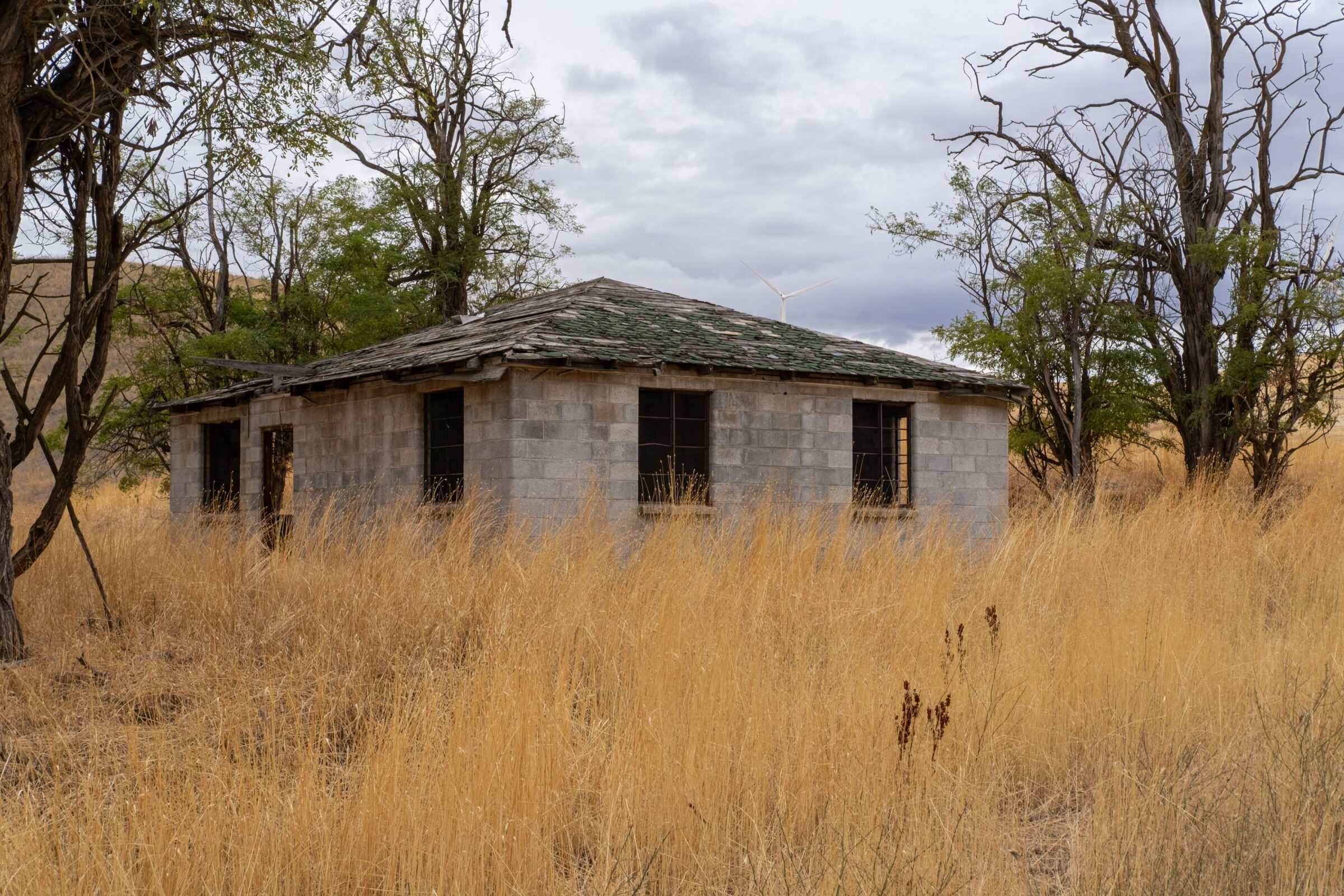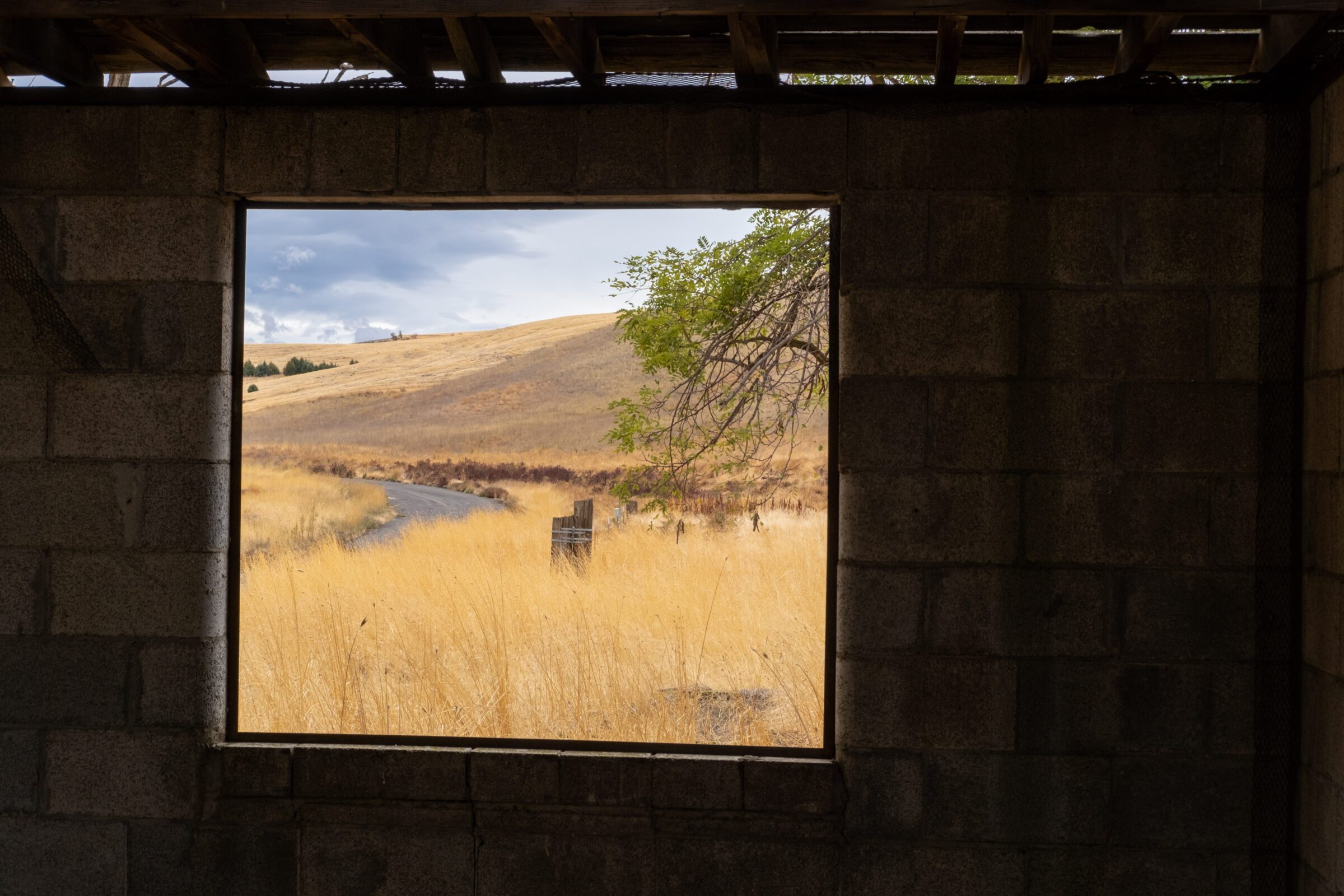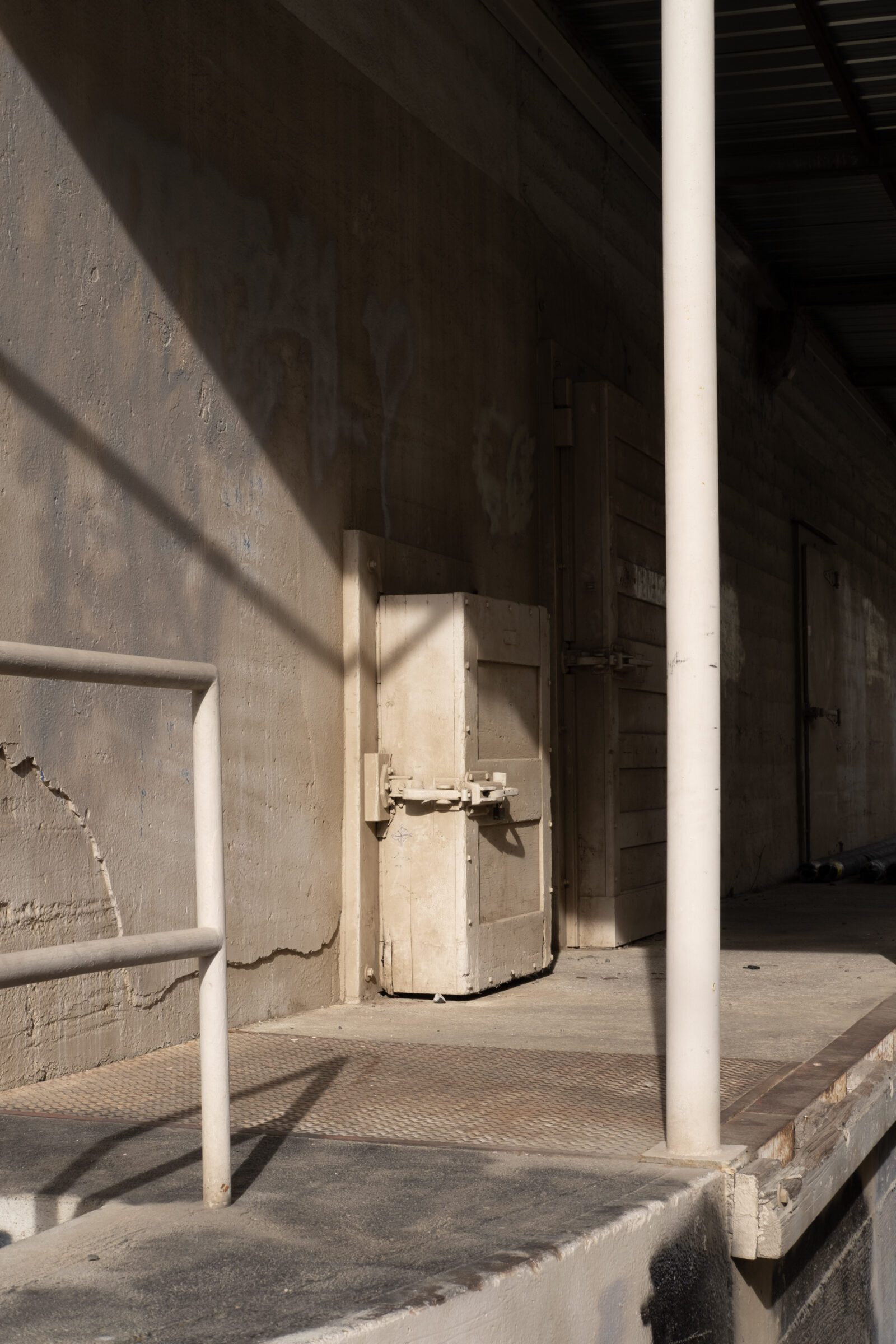Alternative Ways of Going: A Photo Essay on Place

Photo: A humble concrete masonry unit structure, as seen from Frontage Road.
By Steinar Goheen, Washington State University
Our PLACES’ Advancing Leaders (PALs) Program provides funding for students and young professionals to attend our annual PLACES conference and then write an article about what they learned as an attendee (or other relevant topic). Look out for articles from our 2024 PALs in this year’s issues of This Place and online at preservewa.org/pals-articles.
Alleyways, side streets, utility corridors, and landscaping strips subliminally shape our expectations of the urban fabric. However, due to their “gritty” nature or their relatively “low impact,” they are commonly ignored by those in the preservation field. This is a narrative that I would like to change. I believe that these spaces of egress can be beautiful or even a necessity. In analyzing how ordinary people use their city or how these transitory spaces provide shelter to visitors, preservationists and citizens alike can learn about a region’s cultural landscape via these spaces. While I was at the 2024 PLACES conference, I spent some time exploring the alleys, parking lots, and side streets of Walla Walla to find some of these spaces myself.

I left for the PLACES conference from my university in Pullman. As I drove along the highway, I kept an eye on the sides of the road, not knowing what kinds of vernacular buildings I would find. (Despite having multiple meanings, “vernacular” in this case means structures that were created by or for ordinary people.) By chance, I caught sight of a farm structure from the road. Though the building was not being used for anything when I explored it, I believe that its location lends itself well to composing the Palouse landscape: an in situ gallery. Though it didn’t appear to be in use in the current day, the building certainly had meaning for local people in the past. This perspective allows us to theorize what the land was used for, while also using the structure’s protection to frame our views into the immediate landscape.
Upon arriving in Walla Walla, I grabbed my camera and hit the streets. I was unsure of what to expect from the historic downtown area. After quickly realizing that the boutiques and vintners were out of my price range as a student, I explored the alleyways. Compositions of objects in alleyways can be shockingly beautiful. Light and shadow found in industrial scenes can combine to create compositions that would not be able to exist on any main street. Additionally, alleyways can be used as seating areas for those who do not necessarily feel welcome in other places in town. Alleyways and similar spaces provide important spatial qualities for those who can embrace them. I ate lunch atop this stack of pallets multiple times during the conference, as the public plazas were often crowded. This space allowed me to relax, sketch, and photograph without the pressure of others.




Similarly to alleyways, loading docks and other utility spaces are often ignored by preservation. On the last day of the PLACES conference, I decided to walk to the Whitman College campus and spent time exploring the backsides of buildings. Like alleyways, a humble loading dock can feature objects composed in a compelling manner. Additionally, their use does not strictly need to be of a utilitarian nature. These concrete blocks have a surprising amount of uses. When I arrived here, a band of high school skateboarders were just leaving, having used the space to practice tricks and as a backdrop to a video.
In exploring Walla Walla, my biggest takeaway is just how nuanced the built environment is. The only way to truly understand it is to get out there and explore spaces that are typically not explored!
All photos courtesy of Steinar Goheen.
